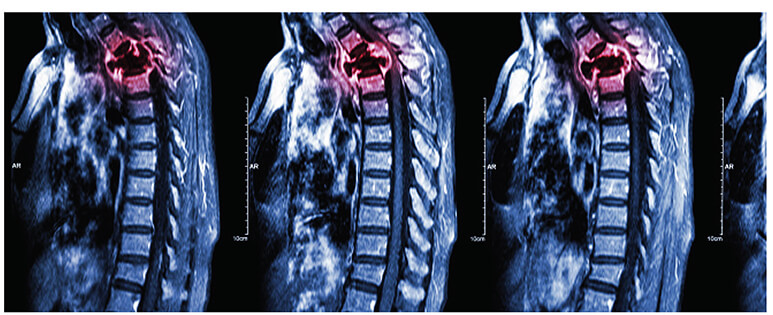Radiofrequency of Spinal Metastases
NEW POSSIBILITIES IN
CANCER TREATMENTS
Our physicians use state-of-the-art technology in their fight against cancer. We evaluate every cancer patient and find the most appropriate treatment plan possible, one that offers the best chances for a cure. Using the most advanced interventional radiology (IR) procedures and imaging modalities we treat tumors directly, and avoid many of the drawbacks of more systemic treatments.
Other Cancer Related Services:
RADIOFREQUENCY OF
SPINAL METASTASES![]()
CHEMOEMBOLIZATION/
DRUG ELUTING BEADS![]()
RADIOEMBOLIZATION
(Y-90) FOR LIVER TUMORS![]()
CENTRAL VENOUS
CATHETER PLACEMENT![]()
CRYOABLATION![]()
RADIOFREQUENCY
ABLATION (RFA)![]()
PORT PLACEMENT FOR
CHEMOTHERAPY![]()
PREOPERATIVE EMBOLIZATION
OF TUMORS![]()
MICROWAVE ABLATION![]()
Radiofrequency Ablation of Spinal Metastases
About the procedure
Radiofrequency Ablation (RFA) is a procedure used to treat cancerous tumors that have spread (metastasized) from the original cancer site to the spine. When tumors form in bone tissue, it can result in intense levels of “bone pain” that may not be relieved by even the most powerful opioid medications. Fortunately, the specialists at Comprehensive Integrated Care Centers perform these procedures that can greatly relieve pain and suffering in patients with bone metastases, allowing them to live a more normal lifestyle while they are being treated for their primary cancer.
Why it’s done
Secondary cancers that metastasize to the spine are painful because they make the bones weaker, more brittle, and prone to breakage. In such cases, radiofrequency ablation is used to destroy the metastatic tumors themselves, while at the same time killing the nerve endings in the immediate area, so they can no longer transmit pain. RFA is then usually followed up with a procedure called vertebroplasty to reconstruct and strengthen the broken vertebrae, which prevents further collapse.

What to expect
Preparation: This is an outpatient procedure, so local anesthesia and moderate sedation are used, so don’t eat within six hours of your appointment, and bring someone with you to drive you home. If you have diabetes and use insulin, tell your CiC physician beforehand, and adjust your dosage on the day of the procedure as advised. During: The affected vertebrae is localized with xray and anesthetic is applied to the area. A small skin nick is made so the RFA device can be inserted into the tumor. In addition, you may be given a mild sedative to reduce any anxiety or discomfort.
Your CiC physician will insert the needle and then guide it directly into the tumor, using X-ray fluoroscopy. Next, the doctor uses the heat of radiofrequency energy to destroy the tumor and surrounding nerve endings.
Finally, the affected vertebra is repaired via vertebroplasty, using a medicalgrade cement to stabilize it and prevent further deterioration.
After: You will spend a short time in the recovery room, where nurses will check your vital signs and apply a small bandage over the site of the incision. When you have been discharged and driven home, you can resume your normal diet, but you should not drive or operate machinery for 24 hours, and you should not engage in any kind of strenuous activity. You should also not take a bath for 1-2 days following the procedure, although you may shower. There are few complications associated with this procedure. Whenever a skin nick is made, bleeding or infection are possible. If you feel some mild back discomfort, treat it with your usual pain medication and applications of ice or cold packs. If you feel severe pain or notice swelling or redness at the site of the incision, have someone drive you to an emergency room and tell
them you have just had RFA.
Getting the best cancer care
As a Comprehensive Integrated Care patient, you will have the most highly trained interventional oncologists possible devoted to your cancer treatment and care. If that care includes radiofrequency ablation and vertebroplasty, you can be sure that you will receive the most advanced care possible.
